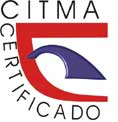Techniques integration for defining nature of uranium in Cuban carbonate reservoirs
Keywords:
carbonates, fractures, reservoirs , porosity, radioactivity, uraniumAbstract
Presence of uranium in carbonated petroleum reservoirs has been linked to areas of good permeability, due to the existence of open fractures through which uranium-rich salt waters have circulated. Moreover, uranium is related to organic matter in reducing environments. This paper aims to shed light on nature of uranium in carbonated reservoirs that appear in Cuban gas-controlled formations. For this purpose, wells containing these reservoirs possessing geophysical well logs with electrical images of well wall, natural radioactivity of samples measured in low bottom chamber and total organic carbon content by interpretation of well logs were selected in the North Cuban Petroleum Gas Province. There is evidence that the presence of uranium cannot be considered a direct index of permeability when it appears associated with open fractures as well as closed. It was also showed its association with organic matter in areas where there is no fracturing; hence, in the resulting model, the presence of uranium cannot be considered as index of fracturing and permeability in Cuban carbonates. Integrating data from conventional geophysical well logs, the FMI well wall-imaging tool alongside laboratory work, forms the key to defining the nature of uranium in carbonates.Downloads
References
Barcala, R., 2016. Caracterización Petrofísica del sector Varadero Oeste. Franja Norte de Crudos Pesados Cubana. Trabajo de Diploma. Universidad Tecnológica de la Habana, CUJAE. 77 págs. + 4 págs. (anexos)
Bowman, T., 2010. Direct method for determining organic shale potential from porosity and resistivity logs to identify possible resource plays: American Association of Petroleum Geologists, Search and Discovery Article 110128 [adapted from oral presentation at AAPG Annual Convention, New Orleans, Louisiana, April 11–14, 2010], 34 p.
Boyeldieu C. & Winchester, A., 1982. Use of the Dual Laterolog for the Evaluation of the Fracture Porosity in Hard Carbonate Formations. Offshore. South West Asia 82 Conference, Singapore.
Heflin, J.D., Neil, B. E. & Devries, M.R., 1976. Log Evaluation in the California Miocene Formation. SPE6160 presented at the 51st Annual Meeting of SPE of AIME, New Orleans, en Arango y Plata.
Huang, R., Wang, Y., Cheng, S., Liu, S. & Cheng, L., 2015. Selection of logging-based TOC calculation methods for shale reservoirs: A case study of the Jiaoshiba shale gas field in the Sichuan Basin. Research Institute of Sinopec Exploration Southern Company, Chengdu, Sichuan 610041, China. http://dx.doi.org/10.1016/j.ngib.2015.07.004
Klaja, J. & Dudek, L., 2016. Geological interpretation of spectral gamma ray (SGR) logging in selected boreholes. NAFTA-GAZ, LXXII (1) 2016.
López, J.O. y Castro, O., 1996. Cómo los registros geofísicos de pozos pueden ser utilizados en la solución de tareas de la geoquímica orgánica. Geofísica’96, 3er Simposio Cubano de Geofísica, La Habana, Cuba.
Miquel, L. y Ortiz, G., 2012. Empleo de técnicas nucleares analíticas en el estudio de las características litológicas y de las propiedades de las rocas sello y reservorio de los yacimientos petroleros cubanos. Trabajo de Diploma. Instituto Superior de Tecnologías y Ciencias Aplicadas (InSTEC), La Habana, Cuba.
Myung, J.T., 1976. Fracture Investigation of the Devonian Shale Using Geophisycal Well Logging Techniques. Proceeding of the Seventh Appalachian Petroleum Geology Symposium, Morgantown, West Virginia.
Passey, Q.R., Creaney, S., Kulla, J.B., Moretti, F.J. & Stroud, J.D., 1990. A Practical Model for Organic Richness from Porosity and Resistivity Logs, American Association of Petroleum Geologist Bulletin, 74, 1777-1794.
Plata, J. y Arango, S., 2002. Aplicación de técnicas indirectas de identificación de fracturas en el Cretáceo de una cuenca colombiana. Revista Fuentes, el reventón energético, 2 (2), 55-65.
Schlumberger, 1982. Natural Gamma Ray Spectrometry. Essentials of N.G.S interpretation, Schlumberger Limited, Services Techniques Schlumberger. 69 pp.
Published
How to Cite
Issue
Section
Copyright (c) 2024 Mariela Torres-Díaz, Olga Castro-Castiñeira, Ronal Barcala-Álvarez, Odalys Reyes-Paredes, Gilbert Ortiz-Rabell

This work is licensed under a Creative Commons Attribution-NonCommercial 4.0 International License.
- Authors retain copyright and guaranteeing the right magazine to be the first publication of the work as licensed under a Creative Commons Attribution-NonCommercial that allows others to share the work with an acknowledgment of the work's authorship and initial publication in this journal.
- Authors may establish separate supplemental agreements for the exclusive distribution version of the work published in the journal (eg, place it in an institutional repository or publish it in a book), with an acknowledgment of its initial publication in this journal.
- Authors are allowed and recommended to disseminate their work through the Internet (e.g., in institutional telematic archives or on their websites) before and during the submission process, which can produce interesting exchanges and increase citations of the published work. (See The effect of open access)









